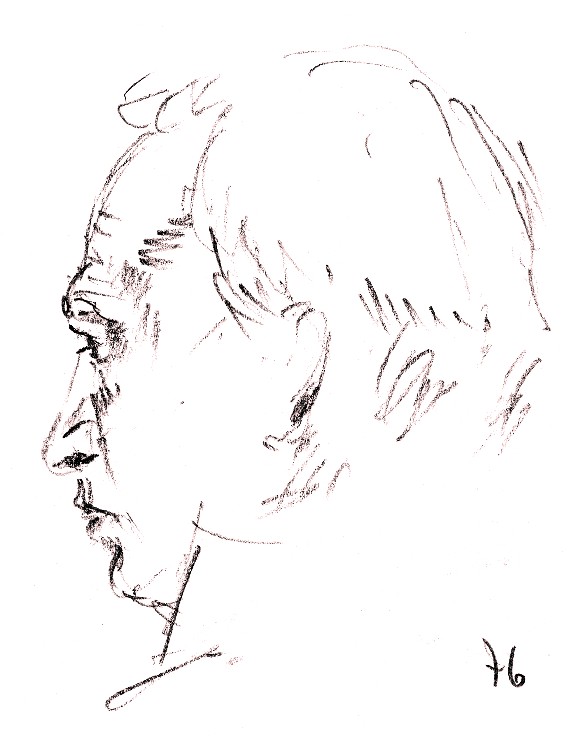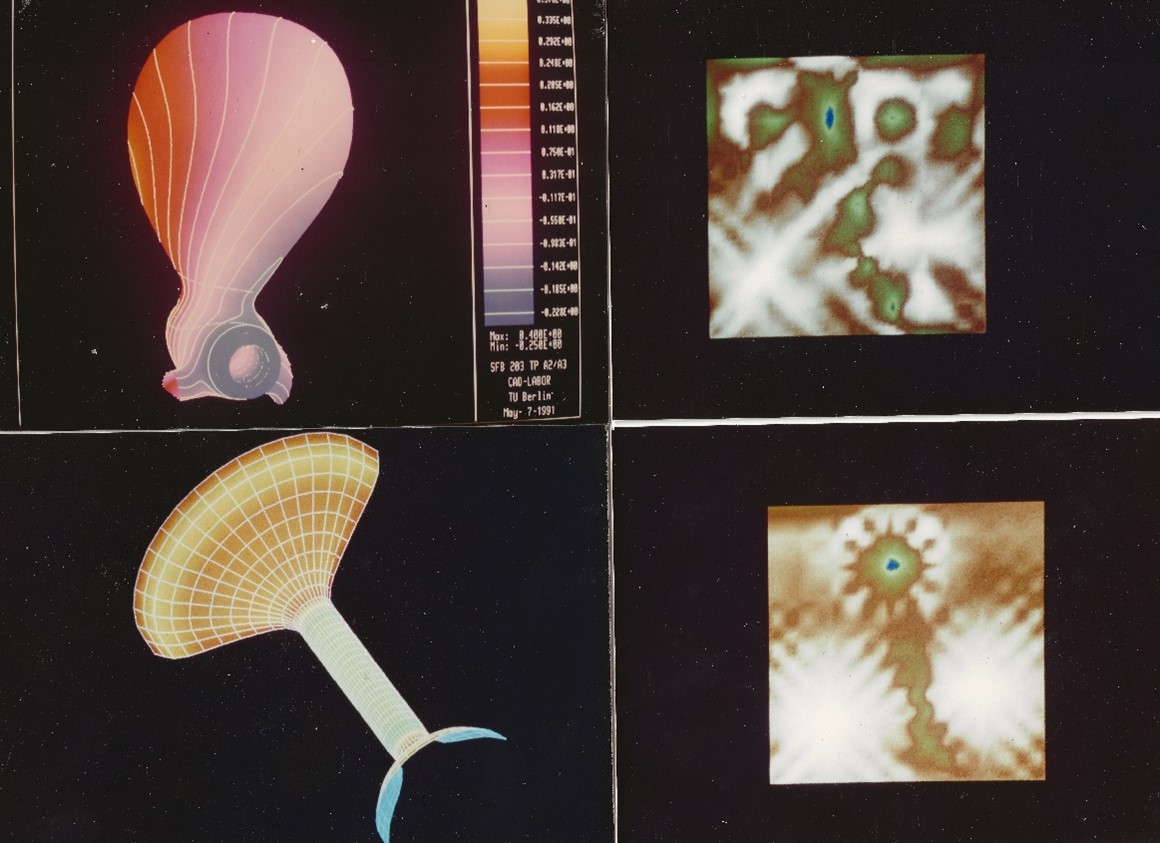Are you going to Berlin?
by Panagiotis Kaklis
Working at home
From the Editorial of JCAD (Elsevier) 2010 Special Issue on: Computer-Aided Ship Design: Some recent results and steps ahead in theory, methodology and practice
Dedicated to Professor Horst Nowacki on the occasion of his 75th birthday
Guest Editors: Dr.-Ing. G. Holbach, Prof. Dr.-Ing. P.D. Kaklis Prof., Dr. Xiuzi Ye Cheung Kong Chair Prof.
Are you going to Berlin?
This was the question with which my PhD supervisor Prof. Ted Loukakis greeted me at the event he was organising at his house in honor of his eminent guest Prof. Horst Nowacki. During that smooth evening of 1987 in Psyhiko (Athens), I could not imagine that the answer to Ted’s blunt question would be eventually in the affirmative. I had just received a small but descent number of positive responses versus my postdoc application campaign. These included INRIA, Univ. Delaware and Carnegie Mellon, that were directly correlated to my PhD Thesis on matched asymptotic expansions for the wave-resistance problem of slender forms.
On the other hand, the TUB option was pointing to the emerging area of CAGD (Computer-Aided Geometric Design) and CAD for Ship Design. There was, however, a link with my Diploma Thesis, again under Ted’s supervision. The topic was splines in tension and their use for shape-preserving interpolation/approximation. I recall that I met Horst at his hotel near the National Archaeological Museum of Athens for discussing the research areas his team was working at the time. As usual, Horst was friendly, open and enthusiastic. Soon after this meeting, I undertook the challenge to go for a postdoc in an area different from my PhD. I am now confident to say this was the right decision. This can be attributed to Professor Horst Nowacki, his research team at ISM (Institut fuer Schiffs- und Meerestechnik) and the city of (West) Berlin.
The research team, funded by the Deutsche Forschungsgemeinschaft (Sonderforschungsbereich 203, Teilprojekt A2), was characterized by its large scale, the friendly and collegial atmosphere and, above all, inclusiveness. Novel ideas and methods were in general welcome, stemming not only from Naval Architecture and Marine Engineering but from other fields as well, such as Computer Science, Geometric Modeling, Numerical Analysis & Optimisation. The approach was ahead of its time. This was due to Prof. Horst Nowacki, who was managing the team by securing high quality of research output, professional efficiency and academic freedom.
Being at postdoc level, this environment taught me how a research team should be developed and operate sustainably. It also expanded my horizons through contacts with various research teams in academia and industry in Germany and elsewhere (France, UK, USA). For example, it is due to Prof. Nowacki that I had the chance to be invited to present our work in the context of the 3rd Workshop and Conference TOPICS IN CAGD ‘90, that took place at the evocative environment of Monte Erice, Sicily, May 12–19, 1990. This event offered me the unique opportunity to meet and interact with other, now legendary, personalities in the area of CAGD such as Josef Hoschek, Carl de Boor, Wolfgang Böhm, Robert Barnhill and Gerald Farin.
The experience was critical and provided precious seeds for building a strong academic international network when starting my academic career as Assistant Professor at NTUA (National Technical University of Athens) during fall of 1990. In this connection, with the aid of Professors Nowacki and Hoschek, I succeeded to get a valuable grant from EU in the context of the HCM (Human Capital Mobility) Framework. The project FAIRSHAPE (1994-97) has been a success in creating postdoc mobility through a network of academic and industrial partners that included TUB, Technische Hochschule Darmstadt, Univ. Firenze, Univ. Zaragoza, Univ. Dundee, NTUA and, last but not least, the SYRKO Team of Mercedes-Benz.
FAIRSHAPE has been a success providing a paradigm about how EU tax-payer money should be invested: one has simply to recall that two of our postdocs group, namely Bert Juettler and Mike Floater, are now internationally established leading scientists at the Johannes Kepler University, Linz, and at the University of Oslo, respectively. It is also worth noticing that FAIRSHAPE delivered to the community three volumes of pertinent works, published by B.G. Teubner, namely: Advanced Course on FAIRSHAPE (1996) J. Hoschek & P.D. Kaklis (eds.), Creating Fair and Shape-Preserving Curves and Surfaces (1998) H. Nowacki & P.D. Kaklis and Benchmark Tests on the Generation of Fair Shapes subject to Constraints (2000) I. Applegarth, P.D. Kaklis & S. Wahl (eds.). The impact of this work remains traceable: a couple of years ago the NYU Librarian has kindly asked me about how they could get copies of these volumes.
Furthermore, I now recall that, among the presentations during the afore mentioned International Workshop on Creating Fair and Shape-Preserving Curves and Surfaces, September 14-17, 1997, Potsdam, Berlin, the audience noticed an interesting contribution on “Parametric Curve Design Applying Fairness Criteria” delivered by Stefan Harries, a young and enthusiastic PhD student of Professor Nowacki. Some years later, the community would start to speak about FRIENDSHIP SYSTEMS AG, a new company with high potential in the area of Computer-Aided Ship Design, managed by an active and inclusive CEO: Dr. Stefan Harries!
To conclude, I have never considered Professor Horst Nowacki as my postdoc Manager but as my Mentor in Research. Despite the short duration (May 1988 – September 1990) of my apprenticeship by him in TUB-ISM, the influence of his paradigm as Scientist and Citizen in Academia remains invariant and encouraging for me. I cannot but express a humble thank-You for his guidance and generosity.
Panagiotis Kaklis
photos from workstations in CAD-Lab – TUB-ISM Building – 1990-91
left column: propeller (top), skinning surface (bottom)
right column: fairing of R. Franke’s benchmarking surface:
Gaussian curvature distribution before (top) after (bottom) fairing


